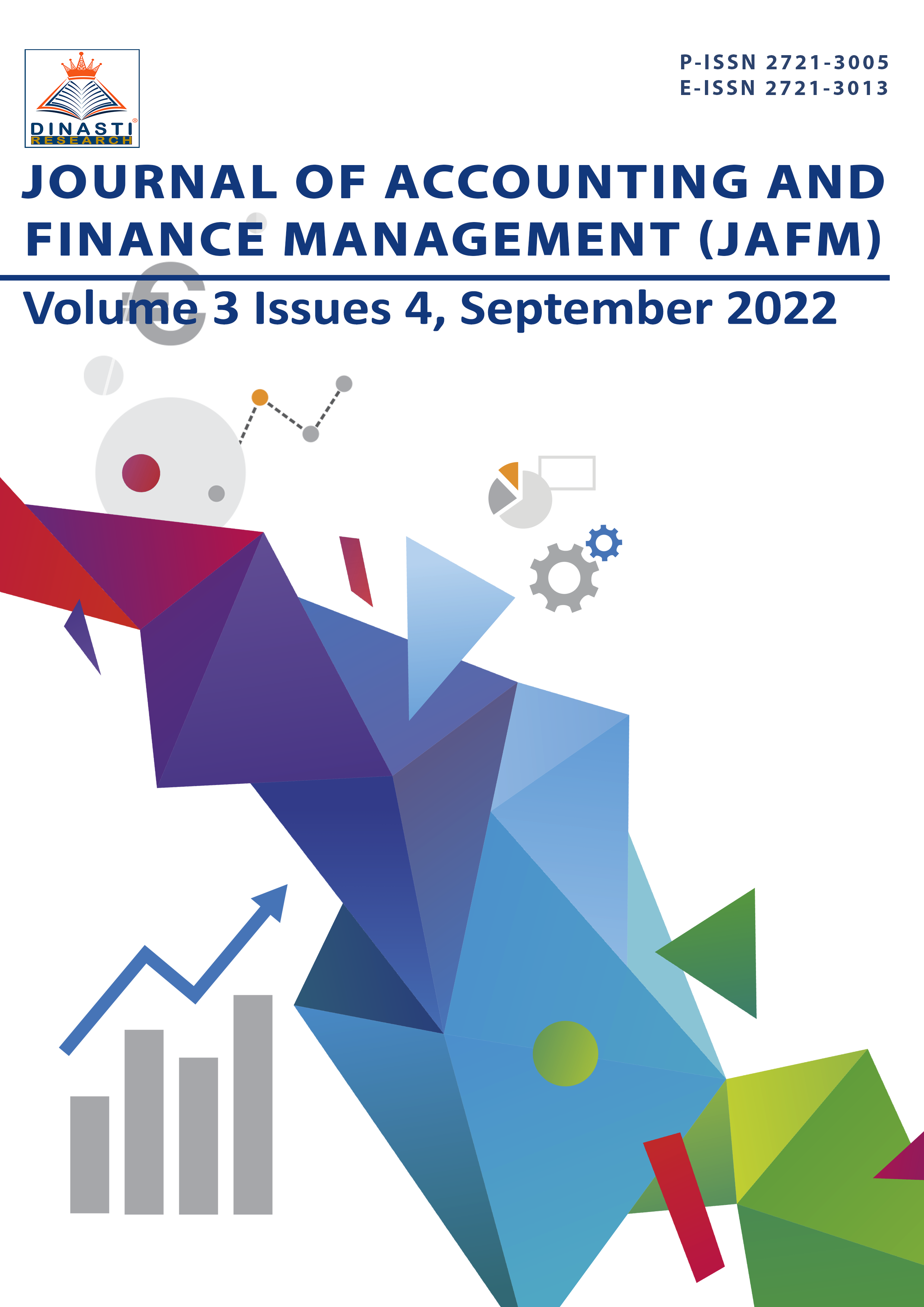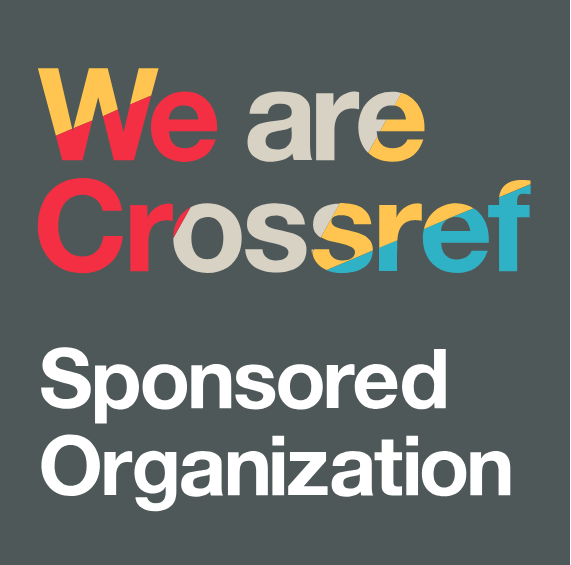Electronic Word of Mouth and Brand Image on Customer Decisions
DOI:
https://doi.org/10.38035/jafm.v3i4.127Keywords:
Electronic Word of Mouth, Brand Image, Customer DecisionsAbstract
This study aims to examine the effect of Electronic Word of Mouth and Brand Image on Customer Decisions. This study uses explanatory quantitative research on 50star hotelin West Sumatra with 150 respondents processed using the SEM-PLS approach. The results of the study indicate that Electronic Word of Mouth directly influences Customer DecisionsStar Hotel in West Sumatra and Brand Image directly influence Customer DecisionsStar Hotel in Jakarta.
References
Abdillah, W., &Jogiyanto. 2015. Alternatif Structural Equation Modeling (SEM) dalamPenelitianBisnis.Yogykarta: Andi.
Al-Sabbahy, H. Z., Ekinci, Y., Riley, M. 2002. An Examination of Perceived Value Dimensions in the Hospitality Industry. Capitalizing on Travel Research for Marketing Sucsess, Arlington, Virginia: Travel & Tourism Research Association.
Aliman, N. K., Wahid, S. D. M., Hashim, S. M., &Harudin, S. (2014). Tourist Expectations, Perceived Quality and Destination Image: Effects on Perceived Value and Satisfaction of Toutists Visiting Langkawi Island, Malaysia. Asian Journal of Business and Management, Vol. 02, ISSN: 2321-2802.
Aliman, N. K., Wahid, S. D. M., Hashim, S. M., &Harudin, S. (2014). The Effects of Destination Image on Trip Behaviour: Evidences from Langkawi Island, Malaysia. European Journal of Business and Social Sciences, Vol. 3, No. 3, pp 279-291, ISSN: 2235-767X.
Alizadeh, A., &Saghafi, G. (2014). An Examination of Antecedents of Loyalty Intention to Travel: The Case of Malaysia. Proceedings of the First Middle East Conference on Global Business, Economics, Finance and Banking (ME14 DUBAI Conference) Dubai, 10-12 October, ISBN:978-1-941505- 16-8, Paper ID_D481
Arianti, Desi. 2014. PengaruhSektorPariwisataTerhadaoPerekonomian dan Keuangan Kota Bukittinggi (PendekatanAnalisis Input Output). Jurnal Wilayah dan Lingkungan, Vol. 2, No. 3, hlm. 183-196.
Artuğer, S., Cetinsoz, B. C. &Kilic, I. (2013). The Effect of Destination Image on Destination Loyalty: An Application in Alanya. European Journal of Business and Management, Vol. 5, No. 13, pp 124- 136, ISSN: 2222-1905, E-ISSN: 2222-2839.
Buhalis, Dimitrios. 2000. Marketing the Competitive Destination of the Future. Tourism Management, Vol. 21, pp. 97-116. Chen, C-F & Tsai, D. C. (2007). How Destiantion Image and Evaluative Factors Affect Behavioral Intention? Tourism Management 28, pp 1115-1122.
Chi, C. G-Q. & Qu, H. (2008). Examining the Structural Relationships of Destination Image, Tourist Satisfaction, and Destiantion Loyalty: An Integrated Approach. Tourism Management 29, pp 624-636. 128
Choi, W.M., Chan, A., Wu. J. 1999. A Qualitative and Quantitative Assessment of Hong Kong's Image as a Tourist Destination. Tourism Management, Vol. 20, pp. 361-365.
Cooper, D. R. & Schindler, P. S. 2006. Business Research Methods. 9th Edition, New York: MCGraw-Hill.
Crompton, J. 1979. An Assessment of the Image of Mexico as a Vacation Destination and the Influence of Geographical Location Upon That Image. Journal of Travel Research, 17: 18 DOI: 10.1177/004728757901700404.
Echtner, C. M., & Ritchie, J. R. B. 1991. The Meaning and Measurement of Destination Image. The Journal of Tourism Studies. Vol. 2, No. 2.
Echtner, C. M., & Ritchie, J. R. B. 2003. The Meaning and Measurement of Destination Image. The Journal of Tourism Studies, Vol. 14, No. 1.
Ferdinand, A. 2006. MetodePenelitianManajemen: PenelitianUntukPenulisanSkripsi, Tesis dan DisertasiIlmuManajemen Badan Penerbit Universitas Diponegoro: Semarang.
Frangos, C. C., Karapistolis, D., Stalidis, G., Fragkos, C., Sotiropoulos, I., &Manolopoulos, I. 2015. Tourist Loyalty is All About Prices, Culture and the Sun: A Multinomial Logistic Regression of Tourist Visiting Athens. Procedia – Social and Behavioral Sciences, Vol. 175, pp. 32-38. Gartner, W. C. 1993. Image Formation Process. Journal of Travel & Tourism Marketing, Impact Factor: 0.97, DOI: 10.1300/J073v02n02_12.
Ghozali, Imam. 2008. Structural Equation ModelingMetodeAlternatifdengan Partial Least Square (PLS). Edisi ke-2, Badan Penerbit Universitas Diponegoro. UNDIP.
Gursoy, D., Chen,J. & Chi, C. G. 2014. Theoretical Examination of Destination Loyalty Formation. International Journal of Contemporary Hospitality Management, Vol. 26, No. 5.
Hair, J.F. Jr., Black, W.C., Babin, B. J., Anderson, R. E. 2006. Multivariate Data Analysis. 6 th Edition, New Jersey: Prentice Hall.
Hair, J.F. Jr., Black, W.C., Babin, B. J., Anderson, R. E. 2010. Multivariate Data Analysis7th Edition, New Jersey: Pearson Prentice Hall.
Haque, A., & Khan, A. H. (2013). Factor Influencing of Tourist Loyalty: A Study on Tourist Destination in Malaysia. Proceedings of 3rd Asia-Pasific 129 Business Research Conference 25-26 February, Kuala Lumpur, Malaysia, ISBN: 978-1-922069-19-1.
Hartono, J., &Abdillah, W. 2009. Konsep&Aplikasi PLS (Partial Least Square) untukPenelitianEmpiris. Yogyakarta: BPFE.
Hosseini, Sahand. 2015. Survey the Relationship Between Destination Image, Tourist Satisfaction and Destination loyalty. International Journal of Research in Social Sciences, Vol. 5, No. 6, pp. 27-43.
Hussein, Ananda Sabil. 2015. PenelitianBisnis dan ManajemenMenggunakan Partial Least Squares (PLS) dengansmartPLS 3.0. Modul Ajar, JurusanManajemenFakultasEkonomi dan Bisnis Universitas Brawijaya.
Kotler, P., & Keller, K. L. 2012. Marketing Management. 14th Edition. Prentice Hall: New Jersey.
Kumar, V., Shah, D. 2004. Building and Sustaining Profitable Customer Loyalty for The 21st Century. Journal of Retailing, Vol. 80, pp. 317–330.
Li, Xiang. (2007). Examining the Structural Relationship Between Destination Image and Loyalty: A Case Study of South Carolina, USA. pp 216-229.
Lovelock, C., & Wirtz, J. 2011. Services Marketing. 7 th Edition. Prentice Hall: New Jersey.
Martı´n, H. S., & Bosque, I. A. R. D. (2008). Exploring the Cognitive-Affective Nature of Destinaiton Image and the Role of Psychological Factors in its Formation. Tourism Management 29, pp 263-277.
Mechinda, P., Serirat, S., Anuwichanont, J., &Gulid, N. (2010). An Examination of Tourists’ Loyalty Towards Medical Tourism in Pattaya, Thailand. International Business & Economics Research Journal, Vol. 9, No. 1, pp 55-70.
Milfelner, B., Snoj, B., &Korda, A. P. (2009). Measurement of Perceived Quality, Perceived Value, Image, and Satisfaction Interrelations of Hotel Services: Comparison of Tourists from Slovenia and Italy. pp 605-624.
Mohamad, M., Abdullah, A. R., &Mokhlis, S. (2012). Tourists’ Evaluations of Destination Image and Future Behavioural Intention: The Case of Malaysia. Journal of Management and Sustainability, Vol. 2, No. 1, pp 181-189.
Mohamad, M., Abdullah, A. R., Ali, A. M. &Yacob, R. (2013). Modelling the Relationships of Service Recovery Satisfaction, Destination Image and 130 Post-Trip Behaviour Intention. International Business Research, Vol. 6, No. 8, pp 113-120, ISSN: 1913-9004, E-ISSN: 1913-9012.
Mohamad, M., Ghani, N. I. A., Mamat, M., &Mamat, I. (2014). Satisfaction as a Mediator to the Relationships Between Destination Image and Loyalty. World Applied Sciences Journal 30(9), pp 1113-1123, ISSN: 1818-4952.
Mohamad, M., Ghani, N. I. A. 2014. Comparing Destination Image and Loyalty between First-time and Repeat-visit Tourists. SHS Web of Conferences 12, 01047, DOI: 10.1051/shsconf/20141201047.
Munhurrun P. R., Seebaluck, V.N., & Naidoo, P. (2015). Examining the Structural Relationship of Destination Image, Perceived Value, Tourist Satisfaction and Loyalty; Case of Mauritius. Procedia – Social Behavioral Sciences 175, pp 252 – 259.
Oliver, R. L. 1999. Whence Consumer Loyalty? Journal of Marketing, Vol. 63, pp. 33-44.
Pike, S., & Bianchi, C. (2013). Destination Brand Equity for Australia: Testing a Model of CBBE in Short Haul and Long Haul Markets. Journal of Hospitality and Tourism Research, 40(1), pp. 114-134.
Rauyruean, P., & Miller, K.E. 2007. Relationship Quality as a Predictor of B2B Customer loyalty. Journal of Business Research, Vol 60, pp. 21-31.
Sadeh, E., Asgari, F., Mousavi, L., &Sadeh, S. 2012. Factors Affecting Tourist Satisfaction and Its Consequences. J. Basic Appl. Sci. Res, Vol. 2, No. 2, pp. 1557-1560.
Sa´nchez, J., Callarisa, L., Rodrı´guez, R. M., Moliner, M. A. 2006. Perceived Value of the Purchase of a Tourism Product. Tourism Management, Vol. 27, pp. 394-409.
Sekaran, Uma. (Penerjemah: Kwan Men Yon). 2006. Research Method For Business. Edisi ke-4, Buku 1 dan 2. Jakarta: SalembaEmpat.
Sekaran, U., & Bougie, R. (2010). Research Method For Business: A Skill Building Approach. 5 th Edition, UK: John Wiley & Sons.
Shen, H., Fan, S., Zhan, J., & Zhao, J. 2014. A Study of the Perceived Value and Behavioral Intention of Chinese Marine Cruise Tourist. Tourism, Leisure and Global Change, Vol. 1, p.CUHK-96.
Sramek, B. D., Mentzer, J. T., Stank, T. P. 2008. Creating Consumer Durable Retailer Customer Loyalty Through Order Fulfillment Service Operations. Journal of Operations Management, Vol. 26, pp. 781–797. 131
Sugiyono, 2013. MetodePenelitianKuantitatifKualitatif dan R&D. Bandung: Alfabeta.
Tasci, A. D. A., Gartner, W. C., Cavusgil, S. T. 2007. Conceptualization and Operationalization of Destination Image. Journan of Hospitality & Tourism Research, Vol. 31, No. 2, pp. 194-223.
Thiumsak, T., &Ruangkanjanases, A. (2016). Factors Influencing International Visitors to Revisit Bangkok, Thailand. Journal of Economics, Business and Management, Vol. 4, No. 3, pp 220-230.
The Travel & Tourism Competitiveness Report 2015. 2015. World Economic Forum (WEF), ISBN-13: 978-92-95044-48-7.
Utama, B. R. I Gusti&Mahadewi, E. Ni Made. 2012. MetodologiPenelitianPariwisata&Perhotelan. Bali: Universitas Dhyana Pura dan Andi.
Wang, X., &Leou, C. H. (2015). A Study of Tourism Motivation, Perceived Value and Destination Loyalty For Macao Cultural and Heritage Tourists. International Journal of Marketing Studies, Vol. 7, No. 6, pp 83-91, ISSN: 1918-719X, E-ISSN: 1918-7203.
Widarjono, Agus. 2015. AnalisisMultivariatTerapan. Yogyakarta: UPP STIM
YKPN.Woodruff, R. B. 1997. Customer Value: The Next Source for Competitive Advantage. Journal or the Academy or Marketing Science. Vol. 25, No. 2, pp. 139-153.
Xia, W., Jie, Z., Chaolin, G., & Feng, Z. (2009). Examining Antecendents and Consequences of Tourist Satisfaction: A Structural Modelling Approach. Tsinghua Science and Technology, Vol. 14, No. 3, 17/18, pp 397-406, ISSN: 1007-0214.
Zeithaml, V. A. 1988. Consumer Perceptions of Price, Quality, and Value: A Means-End Model and Synthesis of Evidence. Journal of Marketing, Vol. 52, No. 3, pp. 2-22.
Zhang, H., Fu, X., Cai, L. A., Lu, L. 2014. Destination Image and Tourist Loyalty: A Meta-Analysis. Tourism Management, Vol. 40, pp. 213-223.
Downloads
Published
How to Cite
Issue
Section
License
Authors who publish their manuscripts in this journal agree to the following conditions:
- The copyright on each article belongs to the author(s).
- The author acknowledges that the Journal of Accounting and Finance Management (JAFM) has the right to be the first to publish with a Creative Commons Attribution 4.0 International license (Attribution 4.0 International (CC BY 4.0).
- Authors can submit articles separately, arrange for the non-exclusive distribution of manuscripts that have been published in this journal into other versions (e.g., sent to the author's institutional repository, publication into books, etc.), by acknowledging that the manuscript has been published for the first time in the Journal of Accounting and Finance Management (JAFM).




























